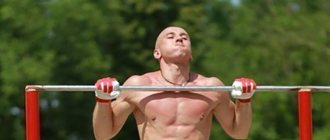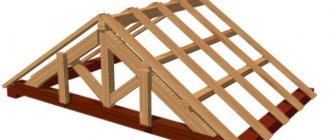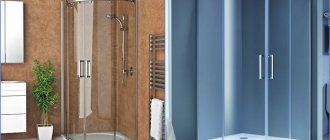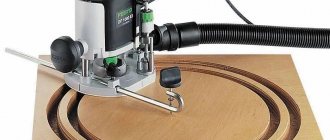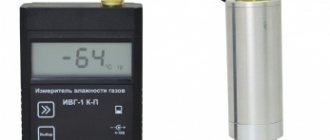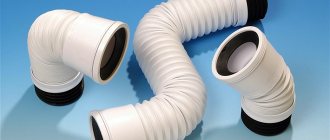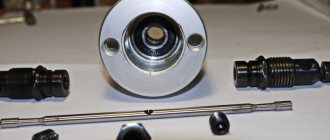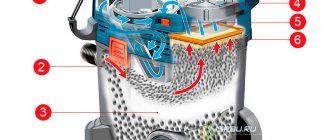The rapid development of construction technologies contributes to the emergence of new building materials and fasteners on the market. One such innovation is the chemical anchor. Although this fastener is not currently widely used, its popularity is steadily increasing.
This type of fastening was originally developed for use in the mining industry. Using chemical anchors, structural elements were fastened to porous and loose rocks that did not have sufficient strength for fastening with metal anchors. The new fastening method turned out to be so effective that it gradually became widespread throughout the construction industry.
This article discusses the principle of operation, main types, advantages, disadvantages and scope of use of chemical anchors. In addition, a list of leading manufacturers and recommendations for independent production of this type of fasteners are provided.
What is a chemical anchor?
A chemical anchor is an innovative fastening system that provides reliable fixation of various elements of building structures in loose, hollow and porous materials. Such materials include:
- shell rock;
- limestone;
- various types of cellular concrete;
- hollow brick.
By themselves, the materials listed above do not have sufficient strength to fasten loaded structural elements, but the use of chemical anchors can solve this problem.
Depending on the material in which one or another structural element needs to be fixed, the chemical composition of the mixture can vary significantly. The exact proportions of the composition, as a rule, are not disclosed by manufacturers, but with a high degree of probability it can be said that the composition of most chemical anchors includes:
- polyurethane, acrylic or polyester resins;
- fine quartz sand;
- cement;
- hardener.
The standard packaging of a chemical anchor resembles a syringe of liquid nails or silicone sealant, but the contents of the container are an effective fastening system that ensures reliable fixation of metal rods in any building material.
What kind of material is this?
A chemical anchor is a substance with adhesive properties. The main difference between the material and conventional fasteners is the ability to fix elements even on an unstable or low-strength surface, as well as on a base that has a complex structure.
This product resembles a regular tube of glue. However, unlike this product, the material is a reliable fastening system manufactured using the latest technology.
Operating principle of a chemical anchor
The principle of operation of the fastening system under consideration is that the working mixture, penetrating deeply into the pores and cavities of the material, hardens and ensures the fixation of metal rods even in cellular concrete and hollow brickwork.
Installing chemical anchors is not particularly difficult. The adhesive mixture is introduced into a pre-prepared hole, after which a threaded rod or conventional corrugated fittings are installed there. The filler tightly envelops the rod and hardens, thereby ensuring its reliable fixation. Depending on the type of chemical anchor, a special dispenser gun or a special capsule may be used to fill the hole with adhesive.
Chemical anchors are significantly superior to conventional anchor systems and dowels in their ability to withstand pull-out loads. The load-bearing capacity of chemical compounds allows the use of this method of fastening when installing balconies, canopies and even bridges, both above and below water.
It is especially advisable to use chemical anchors in cases where neither dowels nor conventional metal anchors are able to guarantee reliable fastening of structural elements to the base. Typically, this situation occurs if the base is a porous or hollow material, for example, shell rock, limestone, gas or foam concrete, cinder block, etc.
When using a fastener element, it must be remembered that the setting and complete hardening of the filler depends on its composition and can range from 5 to 24 hours.
Main types and areas of use
The liquid fixative is produced in ampoules for single use or tubes designed to make up to 500 connections.
The ampoule device is a cylindrical capsule filled with an adhesive composition, which is inserted into a pre-drilled hole. A pin or reinforcement is screwed into the cavity, and the shell of the chemical anchor is destroyed.
A two-component mixture of resin and hardener, mixed with the threaded protrusions of the metal part, flows out and fills the hole and pores of the base. When the mass hardens, a reliable connection is formed that can withstand high tensile and shear forces.
For liquid anchor in tubes, a construction gun is used, into which a cartridge with a mixture and a mixer attachment is placed. When it rotates, the chemical elements are mixed, and the polymerization reaction begins. The hole is filled with glue and metal fasteners are inserted. After the solution has hardened, the connection is loaded.
The cartridge with the remaining solution can be reused. To do this, screw on a new mixer attachment. The shelf life of chemical anchors for concrete is up to 12 months.
The composition of the concrete mixture includes additives and deoxidizing agents to slow down the corrosion of reinforcement. This glue is usually of a thick consistency and is used in conjunction with smooth rods or pins.
Threaded anchors require greater fluidity and an accelerated hardening time. In these cases, the parts are glued in with a semi-liquid solution.
Injection anchors are widely used in construction and repair work, where the base is made of loose materials - slag and foam blocks, hollow bricks, slotted or cellular concrete, and the load on the fastenings is quite high. This:
- external structures - wall lanterns, fences, metal or reinforced concrete flights of stairs, supports, canopies;
- internal - plumbing equipment, ceiling lamps, storage water heaters, suspended air conditioners.
Liquid anchors are indispensable in the construction of frame buildings, fastening blocks to the supporting system, heavy ceilings, equipment and scaffolding.
Chemical fasteners allow advertising banners, antennas, radio masts, and road billboards to withstand dynamic loads. Resistance to water is a valuable quality when used in underwater and hydraulic structures - swimming pools, dams, sea or river piers, water parks, and sewers.
Old brick walls with many pores and cavities are restored using liquid chemical mixtures for fasteners.
Application area
Let us consider in more detail in which cases it is advisable to use chemical anchors. According to reviews from builders and recommendations from manufacturers, chemical anchors are most often used for:
- arrangement of highways and other road works related to the installation of signs, signs, advertising brochures, etc.;
- installation of ventilation systems on loose, porous and hollow foundations;
- reliable fixation of large metal structures;
- installation of massive advertising structures characterized by increased windage;
- restoration of various types of lifts;
- erection of scaffolding and sheathing;
- restoration of monuments;
- carrying out installation work in port areas and construction of various water bodies;
- installation of funiculars used at ski resorts;
- arrangement of electrical facilities.
In domestic conditions, chemical anchors may be required to attach heavy hanging furniture and interior items to an insufficiently strong base.
Types of liquid anchor
As mentioned in previous sections, chemical anchors are typically two-part formulations consisting of synthetic resins and a hardener. The ingredients are mixed immediately before using the anchor. There are three types of packaging for chemical anchors:
- ampoule.
They are a capsule with two compartments, one of which contains the adhesive mixture, the other contains the hardener; - single cartridge.
Inside the cartridge there is a special partition separating the adhesive and hardener; - two-cartridge.
The kit includes two cartridges, one of which contains an adhesive, the other a hardener.
The compositions produced in cartridges work on the same principle, however, to use them you will need various dispensing guns designed to dose the mixture into a pre-prepared hole (hole).
Ampoule anchors
The main feature of such fasteners is that the diameter of the ampoule strictly corresponds to the specific diameter of the prepared hole (borehole). One ampoule is intended to fix one rod (stud, screw, etc.). It is advisable to use ampoule anchors in cases where high accuracy and cleanliness of the hole can be guaranteed.
Capsule anchors are convenient to use because there is no need to control the degree of filling of the hole. Minor differences in the diameters of the hole and capsule are fully compensated by the expansion of the adhesive composition as it hardens.
As mentioned above, the ampoule has two capsules: with an adhesive mixture and with a hardener. The connection of these components occurs by screwing in a threaded metal rod, such as a stud or screw. It should be noted that mixing of the hardener and filler occurs more evenly than when using compounds packaged in one or two cartridges.
The disadvantages of capsule chemical anchors include the inability to use them in a vertical position. This is due to the fact that the filler will flow out of the hole much faster than setting occurs.
Cartridge anchors
As mentioned above, this type of anchor can be placed in one tube, separated by a partition, and in two separate cartridges.
When using one cartridge, the filler and hardener simultaneously enter the cavity of the mixing spout, where they are mixed using a special spiral insert. To work with such anchors, you can use a regular construction dispenser gun.
The two-cartridge system works a little differently. Mixing of components also occurs in a common spout, but they go there separately. To work with such packaging, you will need a special dispenser gun that ensures simultaneous supply of filler and hardener into the mixing spout.
Types of cartridge anchors
All cartridge anchors can be divided into two types:
- universal;
- for fastening metal rods in concrete foundations.
Universal chemical anchors
The popularity of this type of anchor fastening is due, first of all, to its ease of use. During installation work, there is no need to accurately calculate the volume of material required for one fastening.
Anchors designed for attaching metal rods to concrete foundations
Chemical anchors, the main purpose of which is gluing threaded or reinforcing bars into a concrete base, most often have a thick consistency. In addition to the main components, their composition includes corrosion inhibitors and deoxidizers, which significantly increases the reliability and service life of the fastener.
Some types of chemical anchors intended for concrete are used only in combination with special chemicals designed to treat the rods and drilled holes. In addition, special devices may be required to press the rods into the holes.
A significant disadvantage of cartridge anchors is the difficulty of controlling the filling of holes with adhesive. If the amount of working mixture is insufficient, it begins to flow out of the hole if the base is porous or hollow type without waiting for setting.
You can significantly reduce the consumption of filler and achieve its uniform distribution on all sides of the hole by using special mesh bushings. These elements can have different sizes and are selected specifically for a specific mount.
Rules for installation work
Let's look at how to use a chemical anchor. Here it is important not only to follow the instructions for using dowels, but to properly prepare the work site. Thus, the arrangement of boreholes is carried out taking into account the accuracy and responsibility of installation work. In any case, the seat drilled with a hammer drill must be kept as free from debris and dust as possible. It is easier to complete the task by pre-cleaning with a metal brush and then blowing. Then the pores will be freed to form a more reliable adhesion of the chimanker to the base.
Pneumatic blow gun Source instrumentvs.ru
Another option for cleaning boreholes is washing. This method is relevant for working with a base with a closed-cell structure. Here, not just water is used, but special solutions containing surfactants (surfactants). The principle is this: the composition forms a large amount of foam, from which dirt and dust are subsequently removed. This is done by blowing.
If the work is carried out at a site with increased responsibility, the fastening is carried out on load-bearing elements, then in addition the craftsmen recommend using a special conductor during drilling. This is a small cylinder, which is fixed strictly perpendicular to the supporting platform. To form cone-shaped holes you will need a swinging jig or a special drill. This way the input diameter will remain the given shape and diameter.
Immediately after cleaning the prepared hole, you can start working with a concrete mortar. If it is a capsule, then after it is immersed, a pin is screwed in. If the base is porous or has voids, then first the mesh sleeve is inserted, then the fasteners, and finally the injection composition is introduced. To navigate relative to the volumetric part of the released mass, you can use a pistol with a dispenser.
Gun for injection anchor with dispenser Source vsmete.ru
Advantages and disadvantages
Like any other elements of building structures, chemical anchors have their advantages and disadvantages. To avoid unpleasant moments during installation and operation, it is necessary to take into account both the positive and negative features of this type of fastening.
The undeniable advantages of chemical anchors include:
- complete sealing of the hole after installing the rod;
- No tensile stresses in the concrete base.
- Versatility and wide scope of application;
- ease of installation. Installing a chemical anchor does not require experience or special skills;
- high strength characteristics of the anchor fastening after its complete polymerization. In this indicator, chemical anchors are significantly superior to metal anchors and dowels with a plastic sleeve;
- ability to withstand significant mechanical loads and tensile forces. In other words, the fastening element has a high load-bearing capacity;
- chemical anchors are not susceptible to external atmospheric influences, corrosion processes, or the effects of aggressive chemical compounds;
- special chemical anchor compounds can be used in conditions of high humidity and on waterlogged surfaces; in addition, installation of underwater structures is quite acceptable;
- the service life of such fastenings is comparable to the durability of the base itself and is usually at least 50 years;
- There are adhesives that do not contain any toxic compounds. It is advisable to use such fastenings for interior work. When purchasing chemical anchors, you need to make sure that the mixture is environmentally safe;
- The thermal expansion coefficients of fasteners and base materials are approximately equal. This eliminates the occurrence of additional internal stresses during sudden temperature changes.
Along with the above advantages, when starting to use, you should keep in mind the following disadvantages:
- Unlike metal anchors and dowels, chemical anchors require quite a long time until the installed anchor is fully ready to bear the load. The time for complete polymerization of the fastener depends on the ambient temperature:
— at a temperature of +200C, the time for complete polymerization will be from 25 to 40 minutes; will be 25÷40 minutes;
— at 50C this period will be 6 to 7 hours;
- with a further decrease in temperature, the polymerization process may stop altogether.
- Limited shelf life of unopened packaging. When packaged, the composition can be stored for no more than 1 year;
- Once the package is opened, its shelf life is significantly reduced. Based on this, it is necessary to plan installation work in such a way that the packaging is completely consumed at one time. In other words, it is not practical to print packaging for one or two mounts. In this case, ampoule anchors can come to the rescue;
- The high price sharply reduces the demand for this type of fastening.
Negative reviews
A chemical anchor, the price of which is quite affordable and is approximately 600 rubles, also has some disadvantages. Many consumers compare its cost with a regular dowel, and in this matter it loses. Among other things, the anchor can be stored for no more than a year in open packaging, which cannot be called an advantage.
Craftsmen emphasize that polymerization may not occur if the ambient temperature drops below -5 °C. This indicates that work must be carried out at a certain temperature, which is usually 20 °C. Users point out that if the temperature drops, the mixture may take much longer to dry than you expect. This process can take up to 6 hours.
Types of guns for chemical anchors
The use of a cartridge chemical anchor is impossible without the use of special dispensing guns. If the material is packaged in one tube, there are no problems: you can use a regular mounting gun. If the filler and hardener are in different tubes, you cannot do without a dispenser gun of a special design, which ensures the simultaneous supply of ingredients into the mixer spout.
In order to effectively use the dual cartridge dispenser gun, some practical skills will be required. First of all, it is necessary to be able to determine with a high degree of accuracy the required volume of anchor mixture. It depends on several factors:
- diameter of the fixed rod;
- hole depth;
- the presence of a mesh sleeve;
In addition, it is necessary to take into account possible losses of the adhesive mixture during the installation process.
The cost of a dispenser gun for chemical anchors can range from 1,300 to 7,000 rubles. The most expensive and versatile models from Hilti can be used at any ambient temperature. Models are distinguished by a wide selection of dispensers; in addition, the kit may include mounting rods.
Fisher pistols are a budget modification of the tool, and are usually used when carrying out repair work on a small scale.
Models from BIT United Ltd. have gained wide popularity among ampoule automatic dispensing guns. The main advantage of this tool is its affordable price, which, depending on the configuration, can range from 700 to 1000 rubles.
How to choose a chemical anchor for aerated concrete, concrete and brick
Depending on the base material, different anchor mixtures are used. It is extremely important to ensure that the chemical composition of the anchor matches its characteristics and operating conditions. In order to accurately select a material, before purchasing it, you should carefully study the instructions included with it or located on the packaging. This document contains all the necessary information.
Most well-known manufacturers indicate in their recommendations the types of structures and materials for their manufacture, the optimal location of mounting holes and their sizes, the method of fastening, the range of humidity and temperature, as well as permissible loads for various bases. In addition, it is necessary to take into account possible limitations on operating conditions and the rate of polymerization of the mixture - this is of particular importance for chemical anchors with atmospheric polymerization.
How to install an anchor bolt in concrete
The whole process is quite simple, the main thing is to take the measurements correctly and implement everything as accurately as possible. But there are several nuances that need to be taken into account.
Practical tips for installing anchors in concrete:
- The strength of the fastener is influenced not only by the anchor, but also by the quality of the base material (concrete in this case), proper preparation for installation, taking into account the material of the attached structure and the design of the bolt itself.
- If a layer of finish is applied to the wall, the hole must be deeper because the finish is usually less durable than concrete.
- It is advisable to take a drill 0.5 millimeters thinner than the diameter of the future hole.
- When working with a hammer drill, it is best to use a tip made of a special carbide material.
- Read the instructions carefully - the packaging with anchors should indicate the permissible force and the maximum number of revolutions.
- When screwing the anchor into, under no circumstances should you twist it all the way, as the material may collapse.
Eternal fastener: concrete dowel
A dowel is a spacer element made of polypropylene or nylon, which is similar in function and performance to an anchor. It cannot be used independently; it is fixed in concrete with special nails or self-tapping screws. To strengthen the fixation, it is often performed with spikes or antennae.
This type of fastening is used where there are not too large loads on the concrete - fastening shelves, TV hooks, lighting fixtures. The dowels are driven into the dowels with a hammer, and the screws are screwed in with a screwdriver or screwdriver. You will also need a regular hammer to drive in nails.
You can also find dowel nails designed for use with a mechanical gun. The fasteners in concrete are made of metal; in appearance, they somewhat resemble a bullet. Relevant where you need to hang a large number of small items.
Concrete dowel: fast but durable
Pins are those that are most often used for arranging fasteners near the edges of a concrete wall. The fastener does not require additional fixation; it is screwed into the hole, where a little epoxy glue is first poured. There is no need to drill holes - the dowel can be screwed directly into the concrete wall. If you still need to make a hole in concrete, then it is better to choose a drill (a hammer drill can damage the wall).
They screw it in with a screwdriver - and after that it is no longer possible to unscrew the dowel back. Therefore, preliminary marking must be done especially carefully.
The best manufacturers
Currently, several well-known companies occupy leading positions in the chemical anchors market. Below is a list of these companies and the technical characteristics of their products.
| (Germany) | ||
| R.M. | “Reaktionsanker” is an ampoule with an adhesive mass, inside of which there is a compartment with a hardener. The manufacturer produces ampoules of different sizes - M8 (10×80), M10 (12×90), M12 (14×110), M16 (18×125), M20 (24×170), M30 (30×280). | |
| FHP | “Hammerpatrone” is an ampoule with glue and hardener for installing metal elements into a concrete base. Produced in the following sizes – 10 (13×90), 12 (15×110), 16 (18×125), 20 (24×180). | |
| FIS V 360S | “Injections-Mortel” Double cartridge, requires a special gun to operate. Main cartridge with a volume of 360 ml and two mixers. | |
| FIS VS 150 | "Injections-Mortel" One standard size cartridge. To work, you will need a regular construction gun for standard cartridges. The kit includes a 150 ml cartridge, two mixers and an adapter. | |
| (Liechtenstein) | ||
| HVU | "Adhisitive Capsule Anchor". Ampoule with methacrylic polyurethane resin, quartz sand and hardener. Capsules have the following volume: M8 (10×80), M10 (12×90), M12 (14×110), M16 (18×125), M20 (24×170), M30 (30×280), M33 (37 ×300), M36 (40×330), M39 (42×360). | |
| HIT-HY150 | "Fast Curinq Injection System". These are two dual cartridges with acrylic resin and hardener. A special gun is required for operation. Cartridge volume 330 ml and two hardeners, HIT-HY20 has one hardener. | |
| HIT-HY20 | ||
| (Switzerland) | ||
| MSP | "Schlagpatrone". Ampoules with resin and hardener. Capsule volume: M8 (10×80), M10 (12×90), M12 (14×110), M16 (18×125), M20 (24×170). | |
| MYA | "Verbunanker". Ampoules with two components. Volume: M8 (10×80), M10 (12×90), M12 (14×110), M16 (18×125), M20 (24×170), M30 (30×280). | |
| MIT-P | One cartridge. A standard construction gun is used for the job. Cartridge volume 150 ml, two mixers. | |
| MIT-P | Double cartridge. Set: 235 ml and two mixers. | |
| MIT-SF | Double cartridge. Volume 380 ml and two mixers. | |
| (Finland) | ||
| KEM | “Kemiallinen ankkuri” – ampoules with polyester resin and hardener, volume M8 (10×80), M10 (12×90), M12 (14×110), M16 (18×125), M20 (24×170), M30 ( 30×280). | |
| KEMLA | “Kemiallinen lyontiampulli” – ampoules with polyester resin and hardener, volume M8 (10×80), M10 (12×90), M12 (14×110), M16 (18×125), M20 (24×170). | |
| ITH | "Injektointitekniika". Cartridge with injection mass based on polyester resin, volume 380 and 150 ml | |
| (Germany) | ||
| TVA | "Verbund-Anker". Ampoules with resin and hardener volume M8 (10×80), M10 (12×90), M12 (14×110), M16 (18×125), M20 (24×170), M30 (30×280). | |
| THP | "Hammerpatrone". Ampoules with resin and hardener, volume M8 (10×80), M10 (12×90), M12 (14×110), M16 (18×125), M20 (24×170). | |
| TVM-K | "Verbundmortel". Cartridge with injection mass, volume 380 and 150 ml. | |
Is it possible to make a chemical anchor yourself?
Factory-made chemical anchors are quite expensive and also have a limited shelf life, especially after unpacking the cartridge. Meanwhile, it is quite possible to make a chemical anchor yourself at home.
The composition is made on the basis of epoxy resin. The physical and technical characteristics of this component fully ensure excellent adhesion to shell rock, limestone, brick, concrete and many other materials. Thanks to these properties, epoxy resin may well become the main component of a homemade chemical anchor.
To make liquid fasteners at home you will need:
- epoxy resin ED-20;
- hardener UP-583;
- Cement or plaster. A small amount of fine quartz sand can be used as a filler;
- Plasticizer DBP or DEG-1.
The preparation of the mixture consists of several stages:
- A plasticizer is added to the epoxy resin in a volume of 5 to 10% of the resin volume, after which the resulting mixture is thoroughly mixed.
- After this, filler (cement or gypsum) is added to the resulting composition. The resulting substance is mixed until a homogeneous mass without lumps is obtained. The amount of filler also ranges from 5 to 10% of the total volume of the mixture.
- The last step is to add hardener in a ratio of 1:10 or 1:8. The rate of polymerization of the composition and its strength will depend on the amount of hardener.
After thorough mixing, a ready-to-use mixture is obtained, which must be processed immediately after preparation. The setting time of the mixture is 1-2 hours, depending on the ambient temperature. Complete polymerization of the composition can last from 12 to 24 hours. The use of a plasticizer allows you to extend the life of the mixture, and the use of gypsum as a filler, on the contrary, speeds up the setting process.
Briefly about the main thing
A chemical anchor is an initially liquid two-component composition, which, after hardening, is used as a reliable dowel for concrete and other mineral bases.
In terms of strength and practicality, chimankera is considered the best compared to its metal counterparts due to penetration into the walls of the hole, high adhesion to most materials, hardness and rigidity after drying.
Liquid dowels are made based on synthetic resins with the addition of ground quartz, cement and functional additives.
On trading platforms, products are presented in the form of a base and a hardener in three versions: capsules, cartridges with two or one tube.
Before using the working mass, it is important to properly prepare the hole - completely clean it of dust and dirt.
The fastener is ready for use only after the chemical composition has completely hardened.
Ratings 0
How to use a chemical anchor
To use a chemical anchor, no special knowledge or practical skills are required. The procedure is quite simple and straightforward.
If an ampoule anchor is used, the ampoule should be placed in the hole and split with a metal rod. As a result, the components mix and harden.
When using the substance in cartridges, the required amount of adhesive mixture is squeezed into the cleaned hole, after which a metal rod is installed. After the time specified in the technical specifications, the mixture completely hardens, thereby ensuring reliable fixation of the rod.
Installation process
Drilling a hole
Make a mark in the base to install the chemical anchor. To drill a hole to the desired depth, mark the length of the anchor on the drill bit or set the depth stop in the desired position. Drill a hole. Remove dust from it. The fastest way to do this is with a construction vacuum cleaner, which will remove all concrete chips. You can use hand tools - a dust blower and a cylindrical brush. True, it will take more time.
It is important to know! The chemical anchor does not adhere to dusty surfaces, so it is important to thoroughly clean the hole.
Filling the hole with chemicals
At this stage there may be two options. If you are using a two-part solution, you will need a gun to force it out of the cartridge. In the spout, both components are mixed. Press the trigger until a homogeneous mixture comes out of the spout. Only after this can it be used to fill the hole, having previously installed a mesh sleeve of the appropriate diameter in it. Insert the spout into the hole all the way and begin squeezing out the composition in measured doses. One press - pull the tool out a little, a second press - pull it out more, a third - more. This will ensure that the cavity is filled evenly.
It is important to know! If the nozzle of the gun is inserted all the way and the compound is squeezed out without removing the tool from the hole, voids will form. In these places there will be no adhesion to the base.
The second option is to install a chemical anchor in the form of an ampoule. It is placed in the hole, and the composition in it is mixed using an installed pin.
Which option should I choose? The first is suitable for making a large number of anchor connections. The second is ideal for piece work, when the master does not have a gun and does not need to buy a whole cartridge of chemical composition.
Installing the stud
If you are using a stud with a nut, make sure it is not screwed flush against the washer. If it is necessary to install additional elements, for example, metal corners, attach them so that the hole in the plate coincides with the hole in the base. The pin is screwed into the hole either manually or using a hammer drill at low speed. You can stop to pull it towards you a little. This way you will achieve even distribution of the chemicals in the cavity. After screwing in, leave the fastener to harden. It is necessary to maintain the time specified by the manufacturer on the packaging of the composition. Until the composition has set, the position of the pin can be adjusted.
How can I replace a chemical anchor?
Considering the high cost of chemical anchors, the question often arises: what can replace them. It is indeed possible to replace the factory chemical version, but it is necessary to take into account the base material.
For heavy concrete, a classic metal anchor is best. To be fair. It should be noted that such bases do not really need liquid fasteners at all.
When it comes to cellular concrete, a homemade epoxy resin-based anchor can be a good alternative to a factory-made chemical anchor. In addition, the use of drywall adhesive and some other gypsum-based mixtures gives good results. To achieve maximum fastening strength, holes should be drilled in the shape of a reverse cone.
Despite their high cost, chemical anchors are increasingly used to fasten building structural elements to loose, porous and hollow substrates. In terms of their strength characteristics, such fastenings are significantly superior to conventional metal anchors and dowels with plastic sleeves, especially when fastening to weak foundations.
Sequence of use
There are a number of rules and algorithms that will help achieve maximum strength and durability of the connection.
- You need to drill a hole that will be 2 mm larger than the cross-section of the bolt, reinforcement or rod used for fastening.
- The inside of the hole must be cleaned using a brush, vacuum cleaner or water.
- The composition is squeezed inside or a capsule is installed. When extruding, the volume of the composition should not exceed the volume of the hole itself.
- The required fastener is inserted into the hole. You need to wait for final hardening. Remaining adhesive can be removed mechanically.
After installation, the element must be tightly secured in the hole. Wobbling or rotation around its axis is excluded. When installation is carried out at low temperatures, it is recommended to preheat the material using a torch or hair dryer.
© All rights reserved | 2012 - 2019
